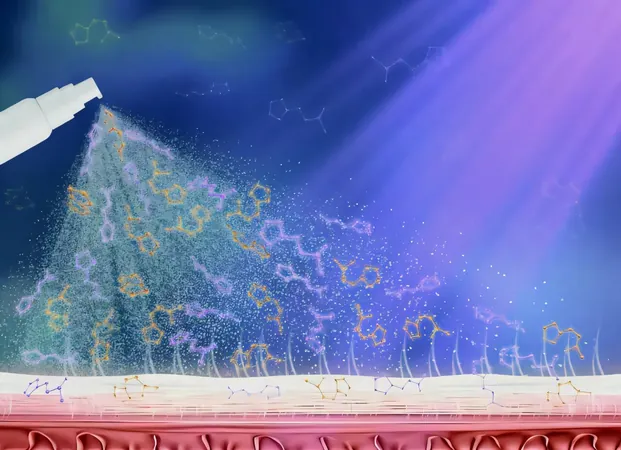
Revolutionary Sunscreen Breakthrough: Nature’s Secret Unveiled!
2024-11-22
Author: Charlotte
In a groundbreaking development, a research team led by esteemed professors Wybren Jan Buma from the University of Amsterdam and Vasilios Stavros from the University of Warwick has made significant strides in the realm of sun protection. Their study focuses on urocanic acid and its derivatives, presenting them as a promising new class of sunscreen filters that could shift the paradigm in UV protection.
Urocanic acid, a naturally occurring compound found in the skin, effectively absorbs UV-A and UV-B rays. In their recent publications in Physical Chemistry Chemical Physics, Buma and his team detail the intricate light-adsorbing properties of this acid, both in its isolated form and as part of solutions.
"The research offers a deep dive into the light conversion mechanisms of urocanic acid," notes Buma, who specializes in Molecular Photonics. "This foundational understanding opens avenues for advancing its photoactive properties. We strongly believe that urocanic acid can fulfill the demand for safer, more efficient sunscreen options, especially given the growing scrutiny over synthetic filters that may pose health and environmental risks."
The Benefits and Challenges of Urocanic Acid
Despite its natural origins, urocanic acid has a low sun protection factor (SPF) of only 1.58, rendering it less effective when compared to conventional synthetic sunscreens. Compounding the issue, exposure to ultraviolet light can transform urocanic acid into a variant that may suppress the immune system. However, Buma suggests that these challenges do not outweigh its potential. "While some may dismiss urocanic acid's efficacy as a sunscreen, we believe it holds valuable possibilities worth pursuing. By engineering urocanic acid-based biomimetic sunscreens, we can potentially create products with enhanced safety and optimized photochemical properties."
Unraveling the Science
The research involved advanced high-resolution laser spectroscopy and quantum chemical calculations, providing fresh insights into how urocanic acid interacts with UV light. Notably, the team is the first to thoroughly explore urocanic acid’s photochemical and photophysical characteristics, signaling a transformative moment for both spectroscopists and chemists who have long grappled with its complexities.
Buma’s team also identified flaws in earlier studies that misattributed results to urocanic acid rather than its decomposition products, thus paving the way for clearer, more accurate research outcomes.
Practical Applications and Future Directions
To validate their findings, the researchers conducted tests in both organic solvents and water, collaborating with the Warwick Center for Ultrafast spectroscopy. They employed time-resolved spectroscopy to explore behaviors across a staggering time scale, from mere femtoseconds to hours. This innovative approach highlighted the capacity to fine-tune urocanic acid's photochemical properties based on molecular alterations and solvent types, setting the stage for next-generation sunscreen formulations.
The prospect of developing stable derivatives of urocanic acid could potentially mitigate the immunosuppressive effects of the original compound, marking a significant advancement in sunscreen technology. Buma emphasizes, "We anticipate our findings will spark a renewed exploration into the photoactive potentials of these molecules, leading not only to groundbreaking sunscreen filters but also to pioneering applications in the field of photothermal materials."
Are we on the brink of a sunscreen revolution, harnessing the wonders of nature to safeguard our skin? Stay tuned as researchers continue to unlock the secrets of urocanic acid, paving the way for a safer, more effective approach to UV protection!









 Brasil (PT)
Brasil (PT)
 Canada (EN)
Canada (EN)
 Chile (ES)
Chile (ES)
 España (ES)
España (ES)
 France (FR)
France (FR)
 Hong Kong (EN)
Hong Kong (EN)
 Italia (IT)
Italia (IT)
 日本 (JA)
日本 (JA)
 Magyarország (HU)
Magyarország (HU)
 Norge (NO)
Norge (NO)
 Polska (PL)
Polska (PL)
 Schweiz (DE)
Schweiz (DE)
 Singapore (EN)
Singapore (EN)
 Sverige (SV)
Sverige (SV)
 Suomi (FI)
Suomi (FI)
 Türkiye (TR)
Türkiye (TR)